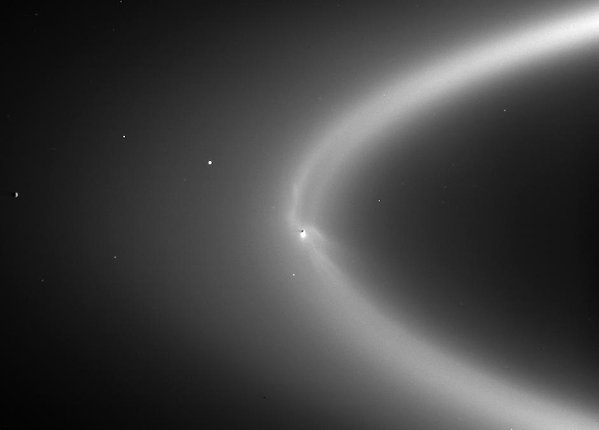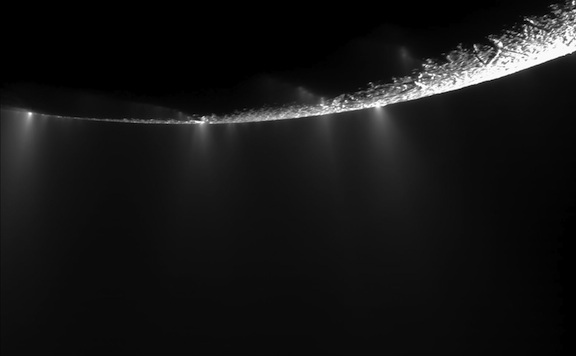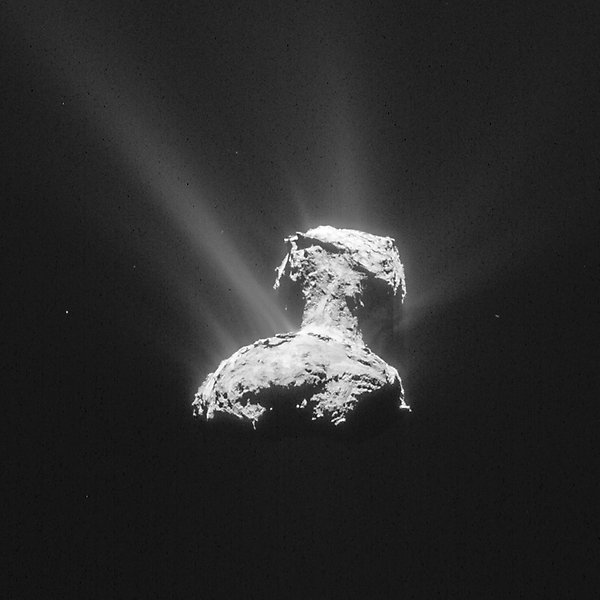Dusty plasmas in space
The presence of a significant component of ionized dust in a plasma can strongly influence its properties, and drive it to behave in a very different manner to a ‘pure’ ion-electron plasma. Dust grains can range in size over multiple orders of magnitude, from diameters of a few nm up to macroscopic sizes.
These grains, when exposed to sunlight, or embedded in a pre-existing plasma, will accumulate their own charge (positive or negative, depending on the surrounding environment). The extremely high mass of these grains, relative to an isolated ion, leads them to respond much more slowly to applied electric and magnetic fields. If the amount of charged dust present is sufficiently large, it can even completely dominate the behaviour of the whole plasma.
Dusty plasma in space covers many different research topics that have expanded interest in recent years. At IRF-Uppsala, we study dusty plasmas in both the Saturnian system, and at Comet 67P/Churyumov–Gerasimenko.
Dusty plasmas at Enceladus
Enceladus is situated in the dense part of Saturn's E-ring and its south polar plume is the primary source of water gas and ice grains (dust). The dust is possibly an important part of the collective plasma and therefore capable of influencing the behaviour of the plasma as a whole.
Using multiple instruments on Cassini, we can accurately measure and compare the densities of ions, electrons, and larger dust grains. Combined, these show the structure of the plasma regions around the small moon, and how they interact with and feed the planet's vast magnetosphere and E-ring.

Dust in the Enceladus E-ring. Image: NASA/JPL/Space Science Institute
Dusty plasmas at Titan
Titan's cold, dense atmosphere and high-altitude ionosphere is a unique laboratory for the study of dust-plasma interactions.
We investigate the role of Titan's ionosphere in creating organic-rich aerosols and pre-biotic compounds in Titan's atmosphere, and hope to evaluate the importance of these processes for the origin of life on Earth (astrobiology). We investigate the interaction between charged dust, plasma and gas in several space environments, and evaluate the importance of these physical processes for protoplanetary accretion disks around newborn stars. The space environments are the plasma disk surrounding the E-ring at Saturn, the exhaust plumes of Enceladus and Europa, the dust-gas-plasma environment around comets, the plasma disk surrounding the ring material at Jupiter, the dusty exospheres at Ganymede, Europa and possibly Callisto. We pay special attention to the role planetary space physics have for, e.g., exoplanets, protoplanetary accretion disks around newborn stars, and origin of life (exobiology). Some good examples are listed below.

Titan ionosphere.
Dusty plasmas at Comet 67P/Churyumov–Gerasimenko
With the recent arrival of ESA's flagship Rosetta mission to the comet 67P, we hope to use our understanding developed chiefly in the Saturnian system to inform our studies of the dusty plasma environment of the comet. Once again, IRF-Uppsala built and operated hardware is central to this, through our involvement in the Langmuir Probe (LAP), as part of the Rosetta Plasma Consortium. As the comet approaches perihelion, and its activity increases, we expect the amount of dusty material ejected from its surface to increase. We aim to study how this process develops through the mission, and its effect on the cometary plasma environment and solar wind interaction.

Dusty outgassing figure from Rosetta. Image: ESA/Rosetta/NavCam
Within IRF-Uppsala
- Jan-Erik Wahlund is PI on the Cassini Langmuir Probe
- Anders Eriksson is PI on the Langmuir probe on Rosetta
- Ilka Engelhardt is studying dust-plasma interactions at Enceladus
- Oleg Shebanits is studying dust and negative-ions in the Titan ionosphere
